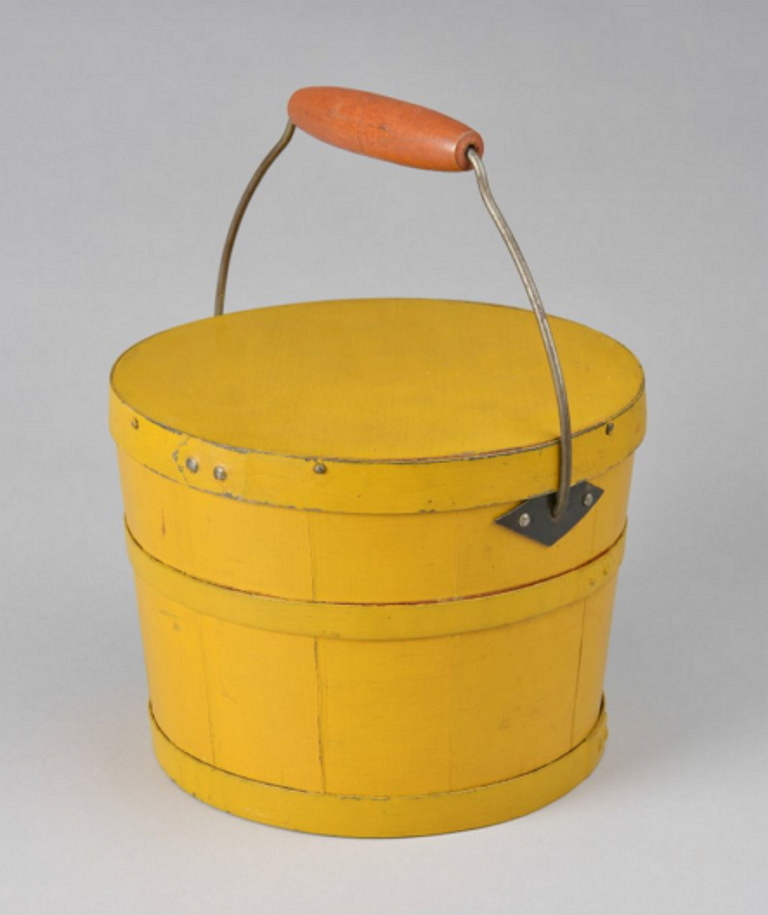Box, Storage
Oval box made at Canterbury, NH by Elder James Johnson for Elder Rufus Bishop
ca. 1850
Description
Oval box (a) and lid (b). Maple box and lid bands, white pine top and bottom. Bands have cut swallowtails fastened to box wall after bending with copper tacks and tops and bottoms held in place with copper shoe pegs. Box is reddish-orange; appears that box exterior was painted with a red-orange wash which has become more orange as the wood has aged. Contains spool holder (c): white pine ellipse about 9/32" thick fitted with a turned handle of (perhaps) black locust and 36 tiny spindles turned from birch; pine base painted with reddish-orange wash. Also contains note (d), ink script on paper: "A Present for / Elder Rufus" on one side, "By James Johnson, ae. 73 yrs. / Chh. Canterbury, NH" on the other. Spool holder (c) bears spools of thread (e-br).
Notes
Personal gifts are not unusual among the Shakers, especially when they are made to members of the ministry. This oval box, made at Canterbury, was fitted with an especially elegant removable spool rack. A piece of loose paper (d) in the box bears the inscription, "A Present to Elder Rufus," on one side and "By James Johnson, ae. 73 years. Chh. Canterbury, N.H." on the other. The bottom of the box is inscribed in pencil, "R.B." Rufus Bishop (1774-1852) was a member of the Mount Lebanon ministry from 1821 until his death, working during those years as a tailor as did many in the Ministry. James Johnson (1776-1861) served as a Church Family elder at Canterbury from 1808 to 1810 and again from 1834 until 1844. He is known to have been a wood turner and "was in all his work very nice and skillful." Whether he made the box or only fitted it with the spool rack is not known, but the exquisitely fine turnings in the handle and spool holders echo his skill. When Johnson gave this box to Bishop around 1849, he may have made others like it to give to other Shaker leaders. A second nearly identical box and spool rack was acquired from Canterbury by Mr. and Mrs. Julius Zieget in 1952 and subsequently given to the Philadelphia Museum of Art, which can be seen here: http://www.philamuseum.org/collections/permanent/59425.html?mulR=1103812641|2
New Hampshire Canterbury Church Family





















